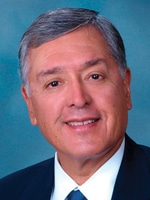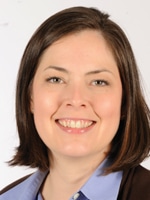Karen Titus
August 2018—Jennifer Hunt, MD, gave it her best shot. While picking up her son after school one day (a task she only rarely had time for) and hearing staff ask, “Who are you?” yet again, followed by, “Oh, you’re Joel’s mom—we didn’t think you existed”—she thought she needed to be a more visible presence at the school.
“They were always surprised he had a mom and a dad,” says Dr. Hunt, chair, Department of Pathology and Laboratory Services, University of Arkansas for Medical Sciences, Little Rock. “So I decided I should be a parent volunteer.”
She pauses for a generous amount of time before expanding on her experience: “I volunteered once.”
It’s a familiar motif to working women, including pathologists and laboratory staff: There’s no way to do it all, no matter how hard you try. And trying can lead to burnout.
Burnout affects men as well, obviously. (See “Frontline dispatches from the burnout battle,” CAP TODAY, June 2018.) But there are arguments to be made—statistically and anecdotally—that it affects women more, and in different ways.
In Medscape’s 2018 physician burnout and depression survey, female physicians once again reported higher burnout rates than their male peers—48 percent versus 38 percent.

Dr. Hernandez
That disparity exists within pathology as well, according to Jim Hernandez, MD, associate professor of laboratory medicine and pathology, Mayo Clinic (in Arizona) School of Medicine and Science, who speaks frequently on the topic of physician burnout. “Family tasks fall more heavily on women pathologists,” he says. When he asks women colleagues at conferences to explain the gap, they tell him, We have to do so much more work at home in addition to professional work.
“Women have two jobs,” agrees David Hoak, MD, pathologist and former president, Incyte Diagnostics, Bellevue, Wash. One is at work, the other at home. “It’s impossible to please both. There’s a lot of stress, and probably even more guilt involved with being away from family for women.”
Bingo, says Dr. Hunt, who remembers one of her mentors telling her, “Guilt is a fact of a professional woman’s life. You can’t get away from it. You will feel guilty. You have to accept that.”
If acceptance is the shot, then acknowledgment is the chaser. Pathologists can’t begin to get a handle on burnout unless they acknowledge it’s an issue, says Dr. Hernandez.Talking about burnout before it becomes a problem is valuable, Dr. Hunt agrees. “There are known coping strategies that work well that you can learn and develop and incorporate into your life. And it’s easier to do that before you’re in turmoil.”
That doesn’t come easy to physicians regardless of gender. In Dr. Hunt’s experience, “I think no one wants to talk about it—except the people studying it.” But those conversations are starting to happen in medical school, she says. At UAMS, medical students now get lectures on mindfulness and have a student wellness center and access to support groups. The conversations may not be taking place in enough medical practices, though. It’s not for lack of awareness—she’s well aware that “burnout” and “wellness” are part of the current Zeitgeist. “We have enough attention on it now.” But the traditional health care system isn’t set up to allow physicians to act on it—their own wellness falls well below other priorities and competing demands.
“We’re all just on the treadmill, trying to run as fast as we can.”
Are men pathologists “allowed” to talk about burnout more than women pathologists? “My gut feeling,” says Dr. Hunt, “is that people assume men burn out because they’re go-getters, and high-powered leaders, and they’re doing amazing work. Whereas the assumption about women is that they’re burned out because they have families, and they’re pulled in different directions, and it’s more about the ‘softer’ side of what we do.
“There’s a stigma attached to that,” she continues. “As women we don’t want to admit or say that we’re burned out because we have so many directions we’re pulled in. Whereas if you’re a man saying, ‘I’m burned out because I work so hard,’ that’s very different. Most women are trying not to say that their career paths, or the ways they’re interacting with their profession, are any different from the way men are.”
Differences do exist, however, and the impact is real, with the #MeToo movement an especially stark example (Jagsi R. N Engl J Med. 2018;378[3]:209–211).
Gina Drobena, MD, chief of pathology, clinical laboratory, Arkansas Children’s Hospital, Little Rock, concurs that physicians are often reluctant to concede burnout—it’s almost antithetical to their job description. “As a whole we are the caretakers and stick it out until the end. This may be even more true for women who are caretakers at home as well as work. Doctors put others first; mothers tend to put others first.” Each tendency can be a step away from self-care and toward burnout.
Dr. Drobena
And while women may not want to draw attention to gender-related differences, Dr. Drobena points to the very real physical strains that women undergo during pregnancy, childbirth, and nursing—challenges not (yet) faced by men. Women physicians tend to tough it out, she says. She recounts the recent experience of one pathologist who said she was sitting in a tumor board, dilated to 4 cm, and timing her contractions at 10 minutes apart. Says Dr. Drobena: “I’m mad at myself for being proud of her and trying to justify it.”
Women physicians might also be burdened by so-called imposter syndrome, Dr. Hunt suggests, which can lead them to doubt their accomplishments. That in turn can be linked to burnout, she says. “Because part of not being burned out is recognizing your self-worth—to the organization, to your profession, to what you do.”
She also sees women physicians setting impossible expectations for themselves, “that they should be able to keep their house neat and tidy, make dinner every night, get the kids on the school bus, and have a productive and wonderful career beyond the PTA. In other words, they try to incorporate every type of woman out there into one: stay-at-home mom, working mom, whatever. It’s this idea that you need to be everything to be a success.” When that fails, “you might become a victim of mom-shaming— ‘Oh, you’re Joel’s mom.’”
Such thinking happens professionally, too, especially in academics. Women often have role models—frequently men from a different generation—“who look like they did it all,” says Dr. Hunt. But that may not have been the case: “They were really good at the things they did.” The women she sees following in those footsteps, however, “think they should be able to look like that person academically and do everything else that a stay-at-home mom does. It’s really hard to look at our lives and say, ‘OK, what can I shed? What can I not do?’”
Social media has been a bright spot for women seeking support, says Dr. Hunt, pointing to private Facebook groups such as physician and pathology moms groups, which provide a form of peer coaching and support. “People bring their most troubling concerns to that forum.”Dr. Drobena has experienced that firsthand. “Social media has been a wonderful tool for me,” she says, noting the value of collective knowledge and accessibility. She belongs to a women physicians leaders group, where members frequently post articles, questions, and issues they might be working through.
Such outlets show a desire for peer coaching and mentoring, Dr. Hunt says, and might be useful in another way. “The issues around burnout are pretty private,” she says. “I bet most people don’t want to go to their department chair with a wellness issue, or talk about how to prevent burnout.” Social media, on the other hand, can offer privacy as well as national and international support. “Our communities are becoming global. It’s not just ‘at work’ anymore.”
Social media has also blurred the lines between work and personal life. Dr. Hunt finds this helpful. Finding a work-life balance may not be a useful concept, in her view, because it implies separating them. “Our work and our lives are intertwined,” she says. “You can’t separate them anymore. We should be thinking about work-life integration.”
She says she learned that lesson when she came to UAMS. Prior to that, she hesitated to send or accept Facebook friend requests from work colleagues. That changed at her current job, where, she says, “It’s really satisfying to have some of my best friends working beside me.”
 CAP TODAY Pathology/Laboratory Medicine/Laboratory Management
CAP TODAY Pathology/Laboratory Medicine/Laboratory Management
